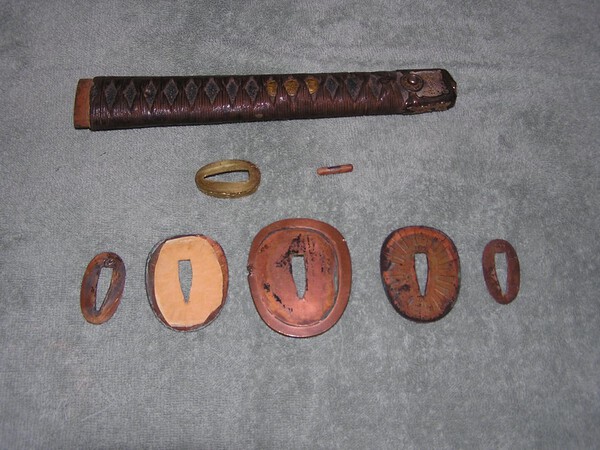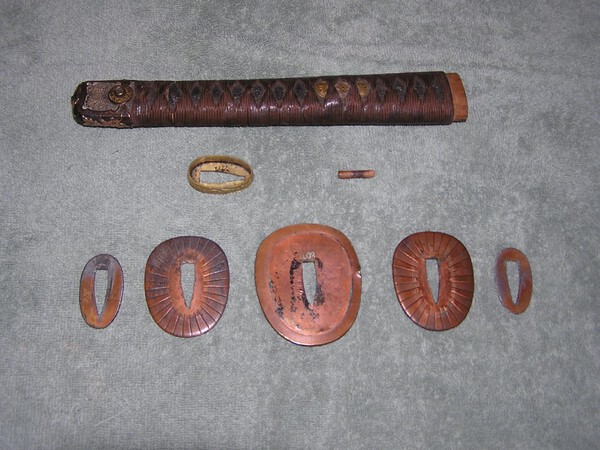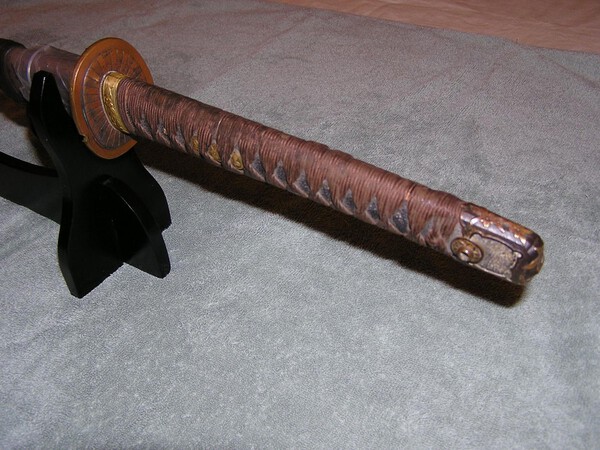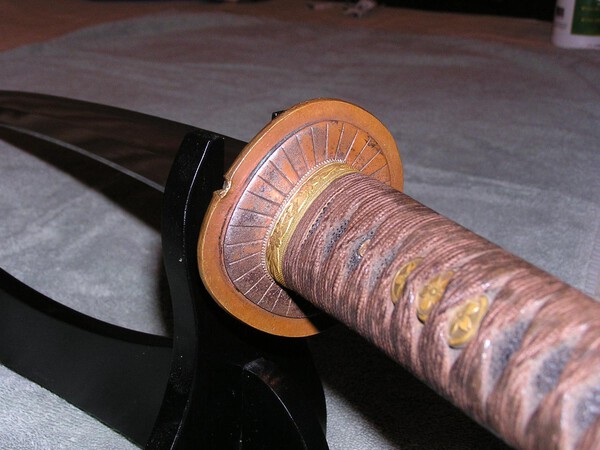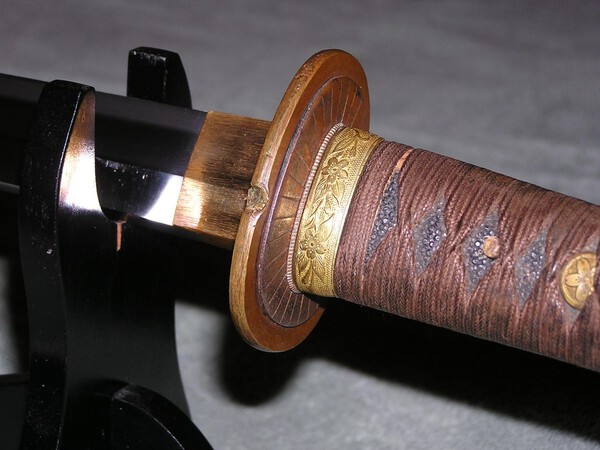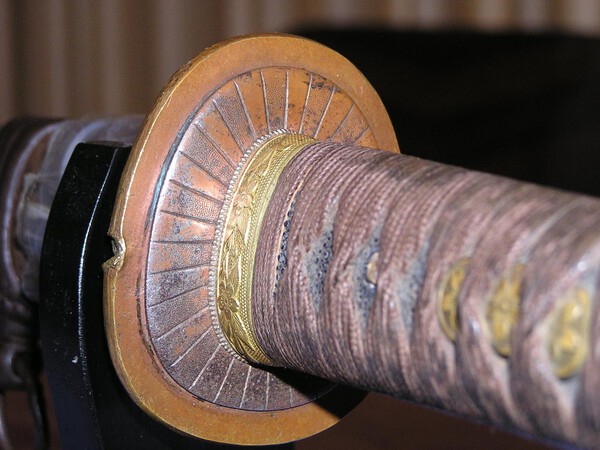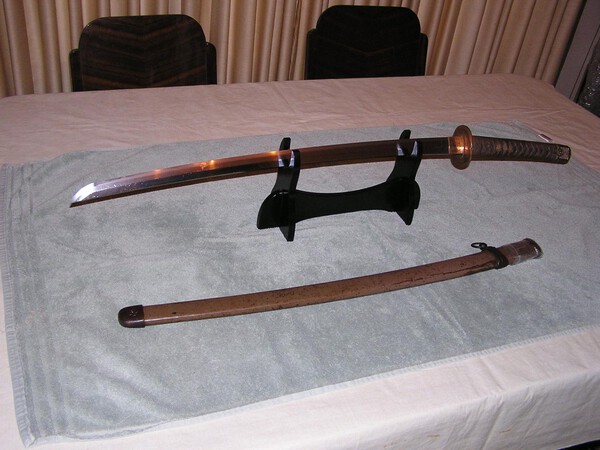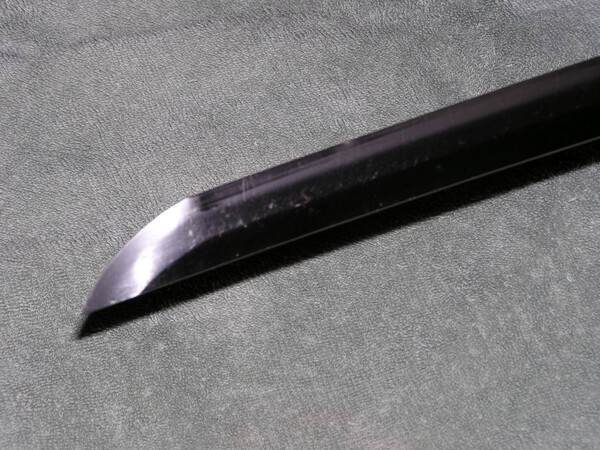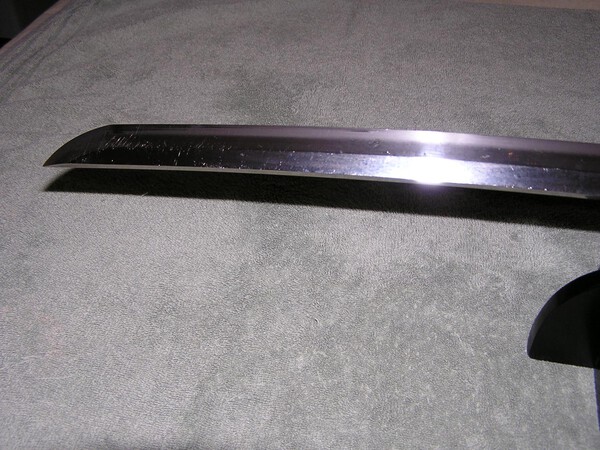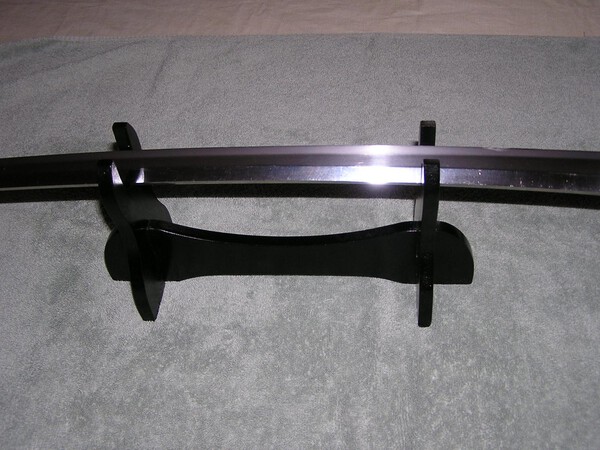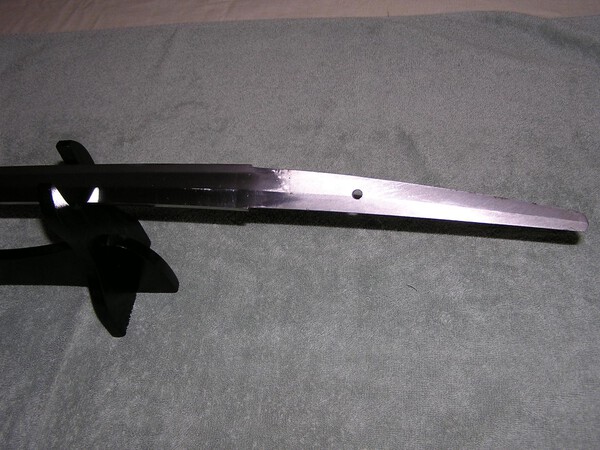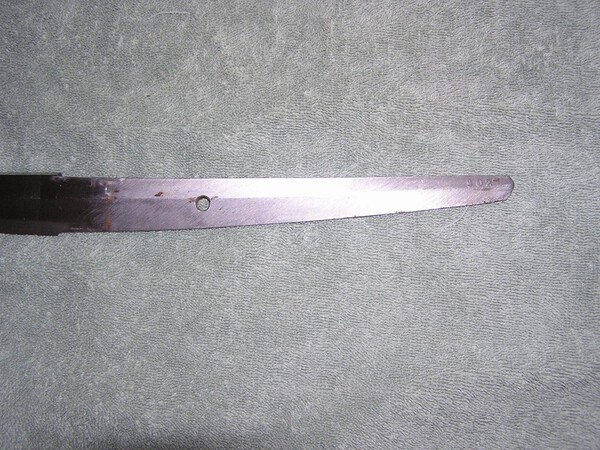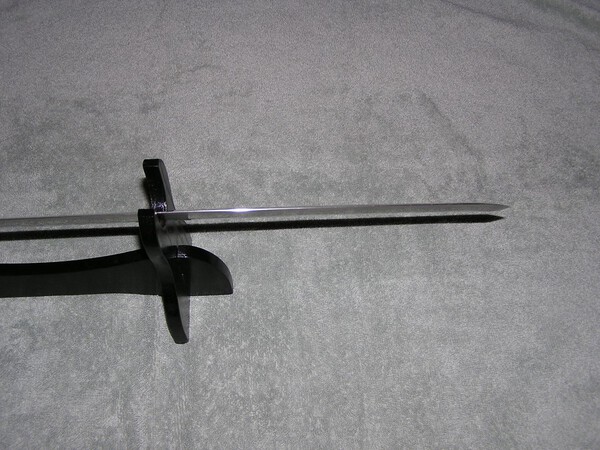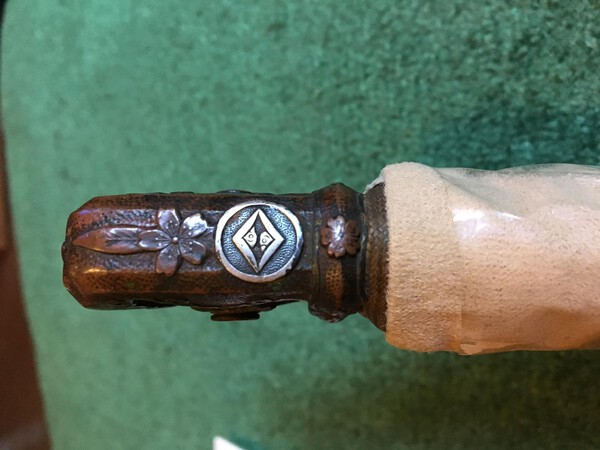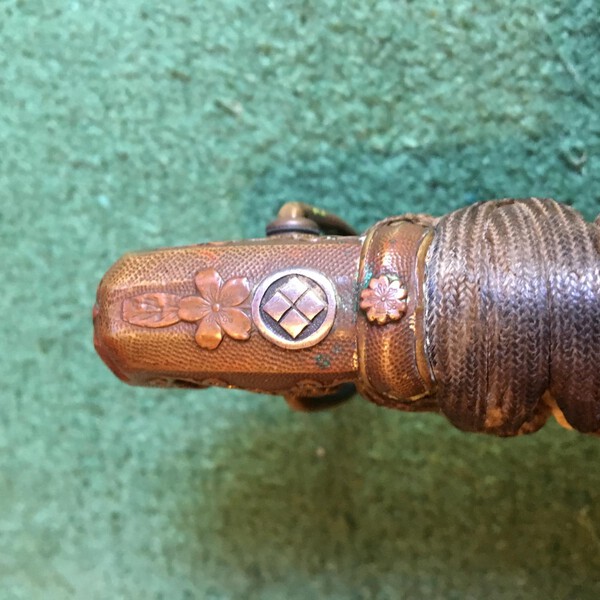-
Posts
256 -
Joined
-
Last visited
Content Type
Profiles
Forums
Events
Store
Downloads
Gallery
Everything posted by Austus
-
Well, Dave, I agree with part of that. Clearly, the saya is a replacement; but it's Army; so who would do that? Perhaps the original saya was one of those rayskin beauties; and that would have gotten snatched.The seppas can't be original; but they aren't normal (and could be one of only two sets known); and all the parts are stamped the same number, 102, including the blade. Plus they're copper plated, and not only is that impossible in the field, no collector or dealer could or would do that. And then there's the de-sharped blade. That doesn't make sense at all, even as a repair. Okay, I'm putting down my new Occam's razor, and proposing a possibility: Perhaps this was an unsigned Minatogawa-style sword owned by a very high ranking officer who suffered through a ship being bombarded. Who else would presume to plate his repaired furniture with flashy copper? Maybe this officer wasn't expected to fight with this sword; so no ha was really needed. Why keep a blade that was so damaged if there weren't something special about the blade or it was too late in the war to replace it correctly? The habaki doesn't fit right, is a different color, and has little wear -- it's probably a replacement, later. Could the original have had one of those Minotogawa habakis on it? Like a mon, those engravings could be put on anything. So maybe the saya and habaki were switched; but it still leaves a lot of mystery. I know this sounds far fetched; but all we have left is conjecture. I really appreciate all the replies to this weird but beautiful sword. Unfortunately, I'm still left with no definitive answers. THANK YOU ALL for the feedback!
-
Thanks, Alan, I appreciate that. Unfortunately, my wording was poor. I was trying to say that it IS sharp starting at the habaki and going forward accouple of inches, where it gets really UNsharp. Previously, I learned here that showa swords are sometimes not sharpened down by the habaki, which is true on a couple of my swords. But this one is the other way around, which makes it even weirder. It gets sharp again at the yokote., and has a nice hissaki. Have you ever heard of ANY sword that wasn't sharp in the body, especially in the sweet spot? Me, neither. If photos could show the ding in the edge near the yokote, maybe others would agree that the most logical reason for this professional dulling (and probably the steel seppas) would be a late-war repair. But then you have further damage (lots of swcratches); but not a lot of rust on the steel seppas. And I'm wondering just what kind of officer would plate the furniture with flashy copper when everyone else is blackened? What a weird sword! I still like it. Thanks for the help, Y'all!!
-
That's a great point, Neil; very helpful. Those O-seppas are thick, and mine are definitely not. They're made to look thick; but are actually very thin. And brass doesn't rust. These require some further investigation. Just not sure where to go with it. I know now why I haven't seen any excellent Kai Guntos for sale lately. Looks like you got them all. Thank you for the helpful feedback!
-
Thanks, Neil, for verifying that. What a collection you must have. I'm starting to think that maybe these steel seppas were replacements later in the war, if and when this sword was repaired. By then, brass was in real short supply; and if they were original, it does seem like they would be a lot rustier than this. One problem with that, though: they're numbered the same as the rest. I may be stuck with just theories, unfortunately, when all is said and done.
-
Wow. Talk about lovely. I feel a little jealous. Okay, maybe a lot. Neil, I noticed one of your Kai Guntos in the "Show Us Your High Quality Guntos" thread (one of these?) that looked like it had small seppas that were steel. Have you ever seen steel seppas or copper plating on a Kai Gunto? Thanks for sharing!
-
Dave, you're right about the harsh truth of that war. I have only recently become aware of the brutality and horror of that campaign. It makes me proud of our military and citizens of the time. I'm beginning to understand why they were called "The Greatest Generation." We all owe them so much.
-
That's a nice sword there, David. I'd love to have one like it. But it's pretty different than mine. Better, maybe, but different. Yours looks traditional, for one. All the seppas on mine will stick to a magnet. Those and the copper plating make this an oddball, if not unique. Maybe that's not good. I'm still looking for answers. Thanks for the feedback!
-
Okay. Thanks, John. You're breaking my heart but I bet you're right. And yes, we're always hoping we got lucky. If only the sword could talk!
-
Just make sure you get one thing across to whoever may have possession of your beloved swords for any amount of time: DON"T TOUCH THE BLADE!! (Not everybody knows that.) Then add: Don't clean the tang.
-
Excuse me, but what is that gold color on the tang?? Is it plating? Has anyone ever seen another tang like this? I have been looking for the answer to that question for 2 years. Thanks, I think. Austus
-
Thanks, Gents, For the feedback. The pictures don't reflect the situation. It looks like, in person, that the tsuba and seppas were originally blackened and then copper plated later. I'm not sure if the tsuba isn't bronze like expected; but don't ever remember seeing one that was copper plated. But what about the steel seppas?? The way I read Dawson, there's only one set of those known. My original conclusions were that this is a refurbished sword that was too early for stamps and was dulled to remove edge damage, leaving only accouple of dings. All the furniture maybe was plated with copper over what was already there. I also thought it was oil tempered, but don't know about the steel. I didn't know about the steel seppas. What about that big ding on the tsuba? Does it look combat related? I wonder if that's why the habaki doesn't fit and has little wear This is a non-locking sword. The habaki is also a little different color than the rest of the fittings. I think it's a replacement, but maybe even later. And the original reason I posted this sword: Could the fuchi be solid gold? Sure looks like it. I'll get it tested if y'all say that's a possibility.
-
Thanks, Ray, for the response. I used a magnet on the blade and it stuck. Will take off the tsuka if need to. Don't know if stainless would be this dark. As for anti-rust steel, that would make great sense, it's really clean. I definitely agree that sayas are switched frequently. I love those Navy rayskin sayas; wish it had one. Maybe it did. What I'm most curious about is those iron seppas and the overall copper plating. Didn't want to influence the thought patterns; but I think this sword was repaired at one time. Seems like there should be some stamps involved here. Any ideas on that?
-
Thanks, Bruce, a lot of that rings true. I put up some more pics that add to the mystery. Let's see if that helps clear the mystery, or adds to it.
-
The tsuba, seppas, and fuchi are stamped 102 like the blade. No numbers on the habaki. The fuchi looks like solid gold. Is that possible? The only other example of this "solid" appearance I can find is in Dawson's book page 277, the Minatogawa sword made by Masanao. That ito is also the same color and twisted. Just sayin'. The habaki is loose. It doesn't show much wear, is cracked, and is not magnetic. But get this -- the tsuba and seppas and maybe the habaki appear to have beer completely plated with copper. There's blackening peering out from underneath. Along with the green corrosion was some rust. When I checked with a magnet, the seppas are iron! They're supposed to be gold-plated brass, right? After reading farther in Dawson's book, it says "Fittings are gold plated brass; in one documented case, gold plated iron." How about copper-plated iron? Got any? Oh yeah, there's a damaged spot on the tsuba. I'm not gonna speculate. But I sure hope y'all do. Any feedback is appreciated. This one is a puzzle.
-
I need help figuring out this very unusual Kai Gunto. For starters, it was resting in a Late-War Army saya. The menukis are clearly Navy. The tang and all numberts match, #102. But it is unsigned, and has no stamps of any kind. I always thought maybe it was stainless steel and/or oil tempered, but the steel is pretty dark. No grain. The first really weird thing: it's NOT SHARP. The kissaki is sharp, and it's plenty sharp forward from the habaki a couple of inches. The dull part of the edge is polished like the rest of the blade. It was either dulled professionally or was made that way. Is this still a sword? There's a ding on the edge a few inches back from the yokote, and a couple of other damaged spots that wouldn't show in the pictures. There are plenty of scratches, especially near the habaki. I'd love to hear that it's not stamped because it's traditionally made. Don't know if the pics will help determine that. Here's where it gets really weird: the furniture. Check the next post pics, please.
-
Thanks, Malcolm, looks like you're right. Didn't see the difference until you pointed it out. Gotta get me an Occam's Razor. What are those phrases? I see the English translation. Are they standard patterns or have known names? If anybody can use whatever they like, then what's the point? At least they are usually attached to really nice swords.
-
First attempt to share these two mons. One is Takeda(?), the other I can't find. Weren't sideways when shot. Thanks, Y'all Austus
-
I came to this forum for answers, and got some really good ones. Not terribly concerned if they weren't sugar-coated. Would have helped if I had gotten all my ducks in a row before jumping into the fray. This site is an incredible source of knowledge and information. I'll be quietly lurking in the shadows.
-
I answered a local Craigslist ad and made a deal with the grandson of the Vet that brought it back. He tried to back out of the deal and wanted to put on ebay where he probably could have gotten a whole lot more for it. When I reminded him that we had a deal, he stepped up and Honored it. I have his grandfather's name and his business card.
-
Is that what you call it? What's a PM? Sorry, I'm New. I did mention that I was now in the wrong discussion; but you were very helpful. Thank You. I'll just blissfully go on thinking that I know what this lovely blade is; and refrain from any further engagement. There's lots to be learned here even as a spectator.
-
I checked it out, and the ha is very sharp to wthin an inch or so, where it's kinda sharp. I have a couple of guntos that are much duller down there; but this one is a little sharper. There's not much fumbari on this blade. It's light and thin. The color is bright, and there's no grain. The entire yakiba glows golden when you turn it into the light. It fits so close to the early 1600s descriptions that I gave up looking. But I do want to know. Thank You for the help. I'll do what I can to learn more.
-
Well, I don't know. The reason I haven't taken the tsuka off in 2 years is it was so hard to get off the first time. I would like to repeat something I wrote earlier, that it almost looked like the entire nakago had been covered with gold leaf at one time: perhaps a reason to file the surface, and there seems to be remnants all around. But I haven't seen it in two years. That's the other reason I haven't removed the tsuka. But wait. Which side of the habaki do you mean? If you're talking about the blade part, then I think I remember that it was. From what I understand, many wartime swords weren't sharpened all the way down. I'll fetch the blade and await your reply.
-
Yes, it was probably Gimei, the only other reason I could come up with is that it was stolen long ago! I did consider the possibility that it was faked before the war, as mentioned earlier, but needed to be used. It was helpful to know about the Ana. That's clear and indisputable. Edo period makes sense for several reasons. If better pictures will tell more; I'd love to know. But now I'm in the wrong discussion!
-
Well, JP, after going back and clicking on the thumbnails, I must agree with you. It looks more like the badge than the W. I haven't had the tsuka off since I bought the sword, and hadn't gone back to my old Mac to look at these photos until I wanted to attach them. Whoops. Sorry I didn't help this discussion any. I would like to know if there's any feedback on that tang, however, because it's still a question mark.
-
I still think the stamp on this tang looks like the service badge on page 152 of the Dawson book. Which might make it an "M"? And I still think this is an old blade. You can see parts of the mei; but it looks like it's been gone for a long time. Why would anybody do that? It doesn't look like it's been shortened; and it's pretty light. Plus it's so gorgeous I don't really think it was made for combat.





